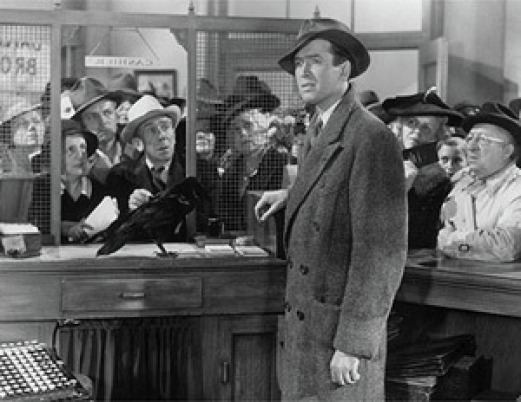SHADOW BANKING
BANK RUN
What are Shadow Bank Runs and How do They Relate to the Financial Crisis?
Shadow Banks function very simular to regular banks. One way that they differ is in their way to combat bank runs. Regular banks (regulated banks) have the saftey net of FDIC, giving lenders of money peace of mind to not withdrawl. For Shadow Banks, they do not have this safty net causeing bank runs to increase in likelyhood. On the same note, regular banks were just as capeable of bank runs before they had FDIC, making the bank run durring the depression not a surprise. Just like what happened to regular banks durring the depression, shadow banks were cut off from their resources that allowed them to finance their investments.
The shadow bank run occurs when lenders fear that their borrower (another bank) may be insolvent. Because of this, a bank will cut off lending to it's borrower, leaving the borrower unable to pay for what it owns. Since this is the main stream way of funding for shadow banks, they are riskier than regular banks because they do not have a safety net when they lose their short term funding to finance their debt.
Shadow Banks used short term borrowing of money in order to finance long term assets. These assets ranged from a variety of different things such as home loans, credit card debt, school loans, ect... The problem that came from the fact that these shadow banks would be denied short term lending and unable to pay for the assets that it had.
Though Shadow Banks did tragicly get run on, they were very likely to be run on in the first place due to their suseptablility to them. These reasons are stated below.
1. Obscurity- Lender did not have any idea what was going on with their money. The investments that shadow banks had could have been very risky and the lender would not be able to find out.
2. Coordination- Durring the recession, if somebody saw a line outside the door of their bank, they would try their best to withdrawl their money because their ability to withdrawl money depends on everybody else not withdrawling their money. The same is true for shadow banks. Lenders ability to take out their money depends on other lenders. Though the bank may be solvent, the system relies on the coordination of other lenders to not withdrawl their funding.
3. leveraged- These shadow banks were very highly leveraged. For Shadow Banks, leverage was procyclical meaning if asset prices went down, they would have to down size their balance sheets to the proportionate level. This makes the lack of funding cause banks to have to sell their assets as quickly as possible.
These quick reasons for seceptablility, when combined, made the shadow banking system walk on thin ice. The threat of a bank run was always very close. However, this did not seem to be the case before the bank run happened. Many investors in the system were very well respected for making good decisions. On top of being credible, many investors made a substantial amount of money from these banks before the system collapsed.
The system grew to amounts that made people believe that the system was too big to bust. There was a lack of scrutiny between investors and lenders because investors held big balances in investments with names such as AAA, or AA+. On top of this, the banks that fell were banks like Bear Sterns and Lehman Brothers. Top named banks that many investors developed a trust in. This shows the relation to the widespread use of these banks and the belief that the system was reliable.
One of the first banks to be run on in the United States was Bear Stearns. When lenders began to see Bear Stearns as insolvent, Bear Stearns had a hard time finding short term borrowing. In the fate of a Bank Run, Bear Stearns was given a quick bail out by the government.
This incident that happened to Bear Stearns marks a very important part of the run on shadow banks. When Bear Stearns was run on, faith in the system started to fail. As stated above in the coordination problem, many lenders would deny lending to banks such as Bear Stearns since their funds depended on other lenders.
This incident at Bear Stearns marked the chain of bank runs that would eventually happen to other banks such as Goldmen Sachs and Lehman Brothers. The fact that these major banks were failing caused much of the trust in these banks to fall.
In the absence of regulation and the fragelity of bank runs, many shadow banks met their end. With the ability to function riskier outside of regulation, shadow banks did just that. This led to the wide spread use of them and less accounting for what these banks really had in terms of investments.
This incident that happened to Bear Stearns marks a very important part of the run on shadow banks. When Bear Stearns was run on, faith in the system started to fail. As stated above in the coordination problem, many lenders would deny lending to banks such as Bear Stearns since their funds depended on other lenders.
This incident at Bear Stearns marked the chain of bank runs that would eventually happen to other banks such as Goldmen Sachs and Lehman Brothers. The fact that these major banks were failing caused much of the trust in these banks to fall.
In the absence of regulation and the fragelity of bank runs, many shadow banks met their end. With the ability to function riskier outside of regulation, shadow banks did just that. This led to the wide spread use of them and less accounting for what these banks really had in terms of investments.
Citations
"Bank Run." Wikipedia. 18 Feb. 2010. Web. 25 Feb. 2010. <http://wikipedia.com>.
Hedge, Zero. "Fed's Bull Dudley Explains Bank Runs, Discusses Collateral Risks, Suggests Way to Prevent Systemic Collapse." Web log post. Infoweb.newsbank.com. 14 Nov. 2009. Web. 25 Feb. 2010.
Norris, Floyd. "Modern Finance Suffers Its version of Run on the Bank." New York Times 10 Aug. 2007. Print.
Shin, Hyun S. "Reflection on Modern Bank Runs: A Case Study of Northern Rock." (2008). Print.
"Bank Run." Wikipedia. 18 Feb. 2010. Web. 25 Feb. 2010. <http://wikipedia.com>
Hedge, Zero. "Fed's Bull Dudley Explains Bank Runs, Discusses Collateral Risks, Suggests Way to Prevent Systemic Collapse." Web log post. Infoweb.newsbank.com. 14 Nov. 2009. Web. 25 Feb. 2010.
Norris, Floyd. "Modern Finance Suffers Its version of Run on the Bank." New York Times 10 Aug. 2007. Print.
Shin, Hyun S. "Reflection on Modern Bank Runs: A Case Study of Northern Rock." (2008). Print.
"Bank Run." Wikipedia. 18 Feb. 2010. Web. 25 Feb. 2010. <http://wikipedia.com>
This picture shows the bank run performed in the movie "It's a Wonderful Life." In this scene, George Bailey has to come up with enough funding to give back to the lenders and keep the banks long term assets in houses.
FDIC- This gives lenders up to $250,000 of security for their money. This keeps lenders from withdrawling their money in the face of a crisis.
Short term borrowing came in the forms of REPO's and Asset Backed Commercial paper.
FDIC- This gives lenders up to $250,000 of security for their money. This keeps lenders from withdrawling their money in the face of a crisis.
Short term borrowing came in the forms of REPO's and Asset Backed Commercial paper.


